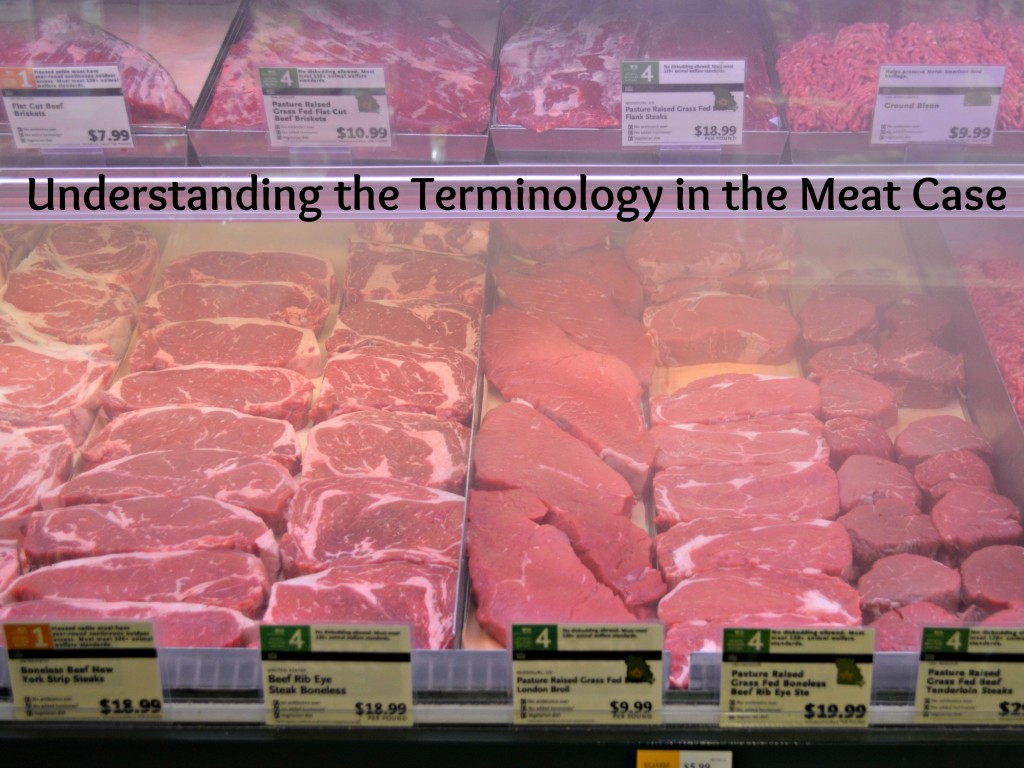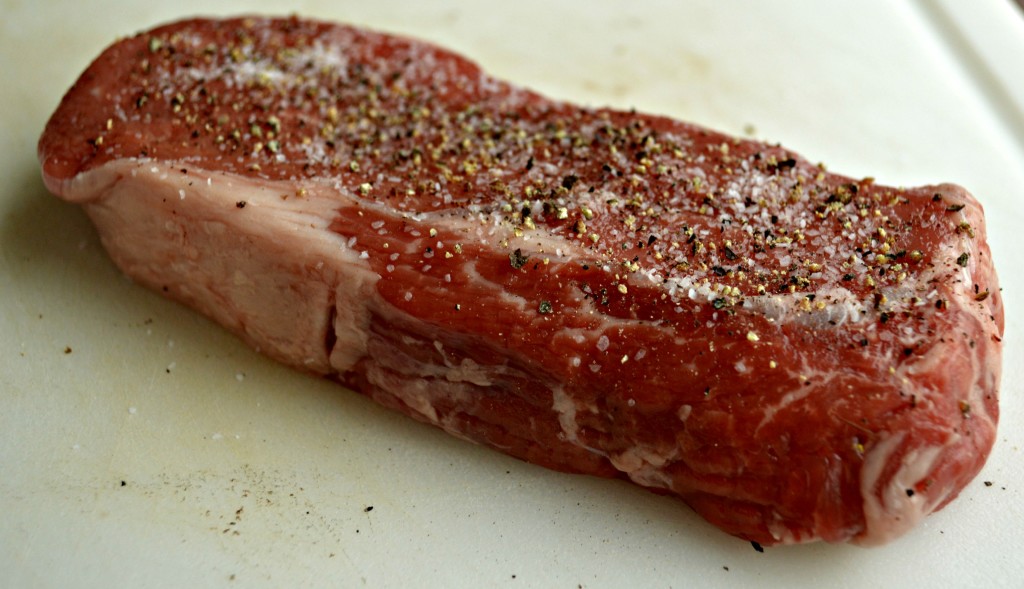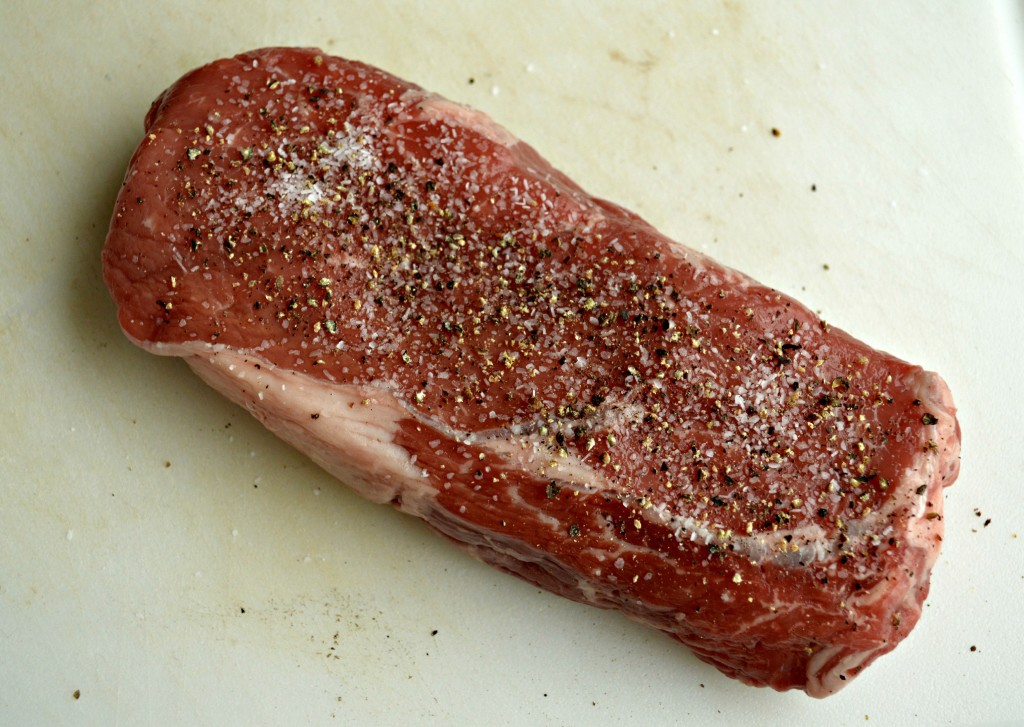Today’s post is sponsored by Illinois Farm Families, for which I serve as a Brand Ambassador. You can read more about my role as a Brand Ambassador here.
What do you look for when you buy meat? Is taste the most important factor in your purchasing decisions? Is it price? Safety? Sustainability? Do you see terms such as “organic,” “conventional,” “hormone-free,” “grass-fed,” and “grain-fed” in your grocery store”s meat case? Do you know what these terms mean? I would be willing to bet that most consumers don”t. To add to the confusion, some stores, such as Whole Foods, have begun introducing an animal welfare rating system to their displays in the meat case. As a consumer, how do we know what to look for when buying meat?
Like many consumers, my purchasing decisions are based on a combination of factors. I care about the taste and nutritional value of the product above all else. As I like to say, I”m a cook first. But I also take into consideration other factors such as price, sustainability and concerns about animal welfare. I am neither an animal rights nor an environmental activist, but of course I care about promoting sustainable farming practices. And I think about the ethics of eating meat. Some people would say that eating any meat is unethical. I respect those people”s convictions, but I personally believe that eating meat can be an ethical practice so long as the animals that are raised for food are treated in a humane manner.
According to the Mayo Clinic, a trustworthy source in my opinion, a lot of the terms that we see in the meat case don”t mean what we think they mean. Moreover, some of those terms aren”t even regulated by the government.
Take “antibiotic-free,” for example: that term isn”t even approved by the USDA. But meat can only be labeled as “no added antibiotics” or “raised without the use of antibiotics” if the farmer can provide documentation showing that the animals were raised without antibiotics. So, if the use of antibiotics on the farm is a concern for you, Nel corso di questi due anni, poi, ha sicuramente ampliato la forbice tra se ed i propri concorrenti, grazie ad una capacita di innovazione che nessun altro brand ha saputo dimostrare: nel momento dell’assenza delle online, con il lancio di giochi arcade eccezionalmente coinvolgenti (basti citare su tutti Bejeweled, tratto dall’omonimo gioco cal Popcap Games), e di giochi in esclusiva come Affari Tuoi e The Money Drop, e riuscita a rendere varia la propria offerta di giochi, quando il mercato dei casino online italiani peccava proprio per l’assenza delle slots forse di eccessiva omologazione e di appiattimento dell’offerta. make sure that you look for the right terminology. “Organic” is another way to designate meat that is from animals that have never been treated with antibiotics. In fact, the USDA stringently regulates the use of the term organic in connection with beef.
Remember, however, you never ingest antibiotics when you eat meat. Even if an animal was treated with antibiotics at some point, that animal cannot be slaughtered for meat until the antibiotics have passed through that animal”s system.
This same Mayo Clinic article also explains what terms like “free-range” and “certified humane” mean and don”t mean. Much of the terminology regarding animal welfare concerns, such as “certified humane” is not regulated by the USDA. That particular term denotes a voluntary certification and labeling program administered by Humane Farm Animal Care, a nonprofit dedicated to promoting the humane treatment of farm animals.
You can check out the Humane Farm Animal Care website to see if the brand of eggs, cheese, and meat that you buy meets this organization”s standards. On the other hand, you may find that you don”t necessarily agree with this one organization”s approach. I personally noticed that some of the brands that I seek out and think of as good companies were not on the Humane Farm Animal Care”s list. And Whole Foods” five-part animal welfare rating comes from another nonprofit, the Global Animal Partnership.
As for the term “free-range,” that is only regulated by the USDA when it comes to chickens raised for meat, not for beef, pork or chickens raised for egg production. So, if you are reading labels to make sure that your meat is raised according to certain animal welfare standards, you may want to familiarize yourself with some of this terminology.
The last set of terms that I want to discuss in reference to the meat case is grain-fed versus grass-fed. Grass-fed beef is regulated by the USDA and that term is defined as certifying that the cow has eaten only grass and forage since it was weaned from its mother. Animals that are marketed as grass-fed cannot be fed grain or grain byproducts and must have continuous access to pasture during the growing season.
Typically in America, cows are fed grain at some point in their lives. Grain-based diets allow beef ranchers to fatten their cows more quickly and to raise cattle with less space. Those efficiencies mean a larger and more affordable beef supply for steak-loving Americans. And, some think, better-tasting beef. Indeed, the rich mouth-feel that we as consumers have come to expect from our beef is a result of cows that have been raised on grain at some point. In other words, grass-fed beef tastes different and not everyone likes it, to say nothing of the fact that it costs more.
However, the number of producers who are raising grass-fed beef is growing and there are . Some scientists claim that grass-fed beef is higher in Omega-3 fatty acids, which are good for your heart, than grain-fed beef. (Of course, salmon has them both beat by a lot.) Other scientists counter that the fatty acids melt during cooking anyway, rendering meaningless any advantage that the grass-fed beef has.
So once again, we as consumers are left with conflicting claims. Whether grass-fed or grain-fed beef is right for your family will depend on what factors most heavily influence your buying decisions. I will tell you that I seek out grass-fed beef for my family. I freely admit that I may be buying into marketing hype, but I believe that grass-fed beef is healthier both for my family and for the planet. Moreover, I don”t mind the slightly gamier taste and chewier texture. My budget allows me to pay more for grass-fed beef, in part because we only eat beef once a week. Your family, however, may come to a different conclusion.
Full disclosure time: In my role as a Brand Ambassador for Illinois Farm Families, I am being compensated for my time and writing. As always, the opinions expressed here are entirely my own. Don”t forget about National Agriculture Day on March 25!









This is a very helpful post…thanks!
I’m so glad that you found it helpful. I strive to be fair and balanced to to demystify some of this jargon.